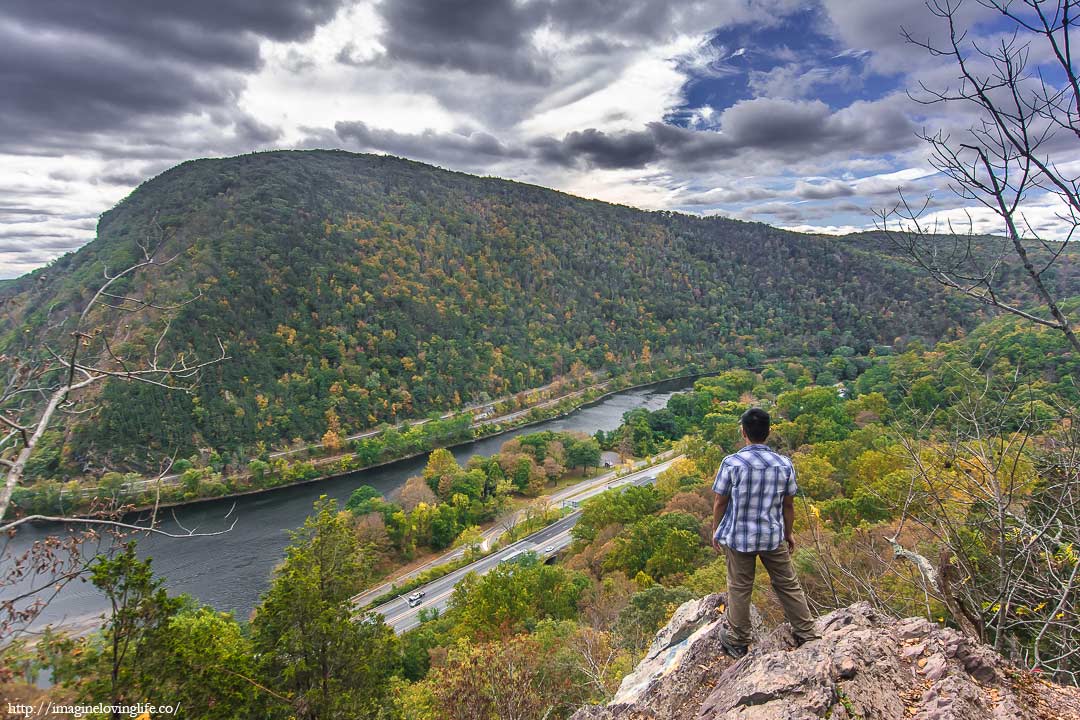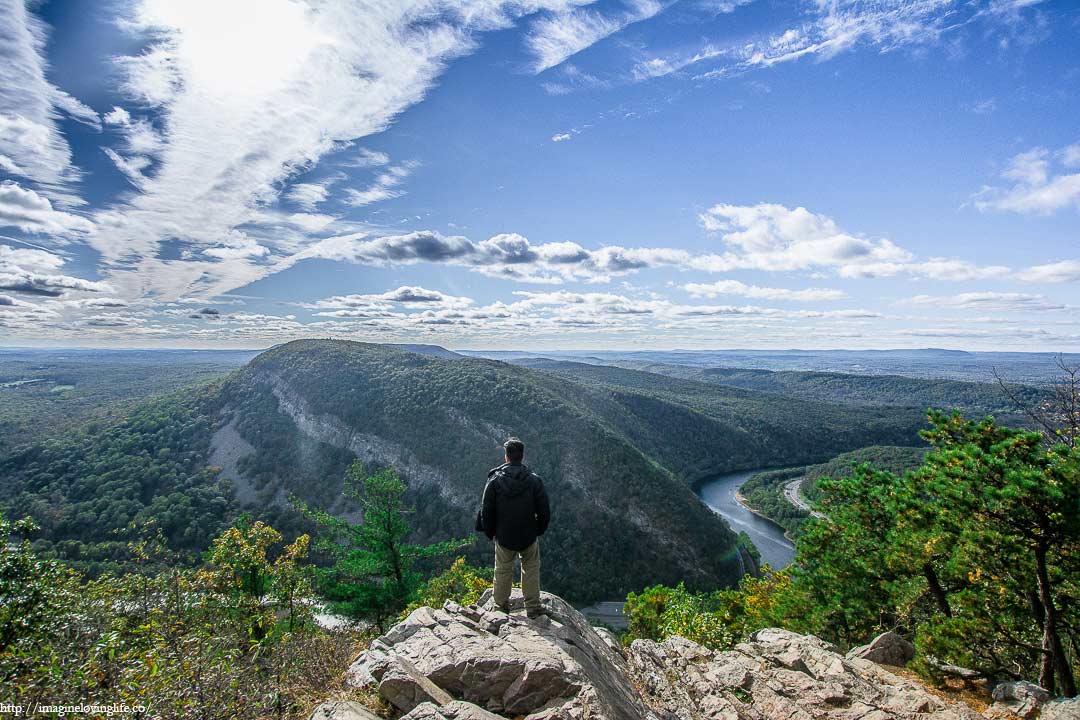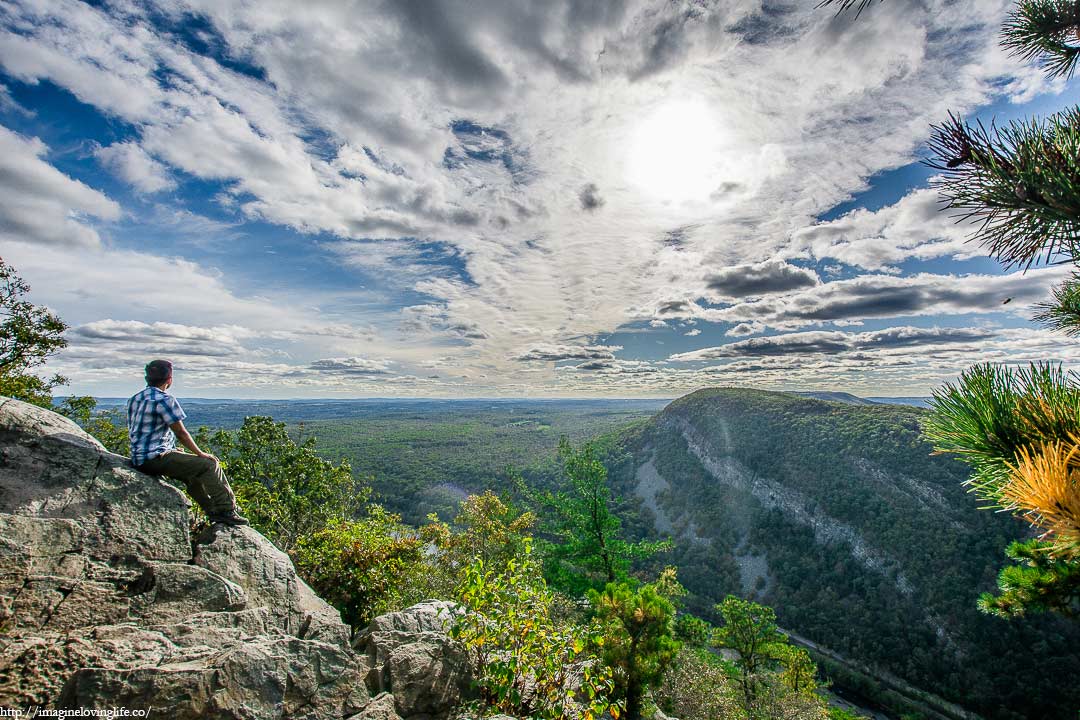
Trekking poles are some of the most important hiking equipment I have ever come across. I would have gotten a bunch of broken bones, scraped skin, and other injuries to my body if I did not have trekking poles. They allow me to hold my ground, stabilize my footing, and prevent me from falling down if I ever lose my balance. Trekking poles also have a lot of other benefits but for me, the biggest one would be that they prevent me from falling. I’m carrying around 1,000 dollars of camera equipment. If I fall down, there is always a chance that my camera and other devices will get destroyed.
Features Of Trekking Poles We Need To Look At
Handle Material
There are 3 main handle materials that we need to consider. Every hiker will have his own preference. I have mine also and I will talk about it here.
Cork
Cork is an amazing material for a handle. This is great if your hands sweat a lot. They resist moisture, decreases the vibration caused when the poles hit the ground, and the cork handles often conform to the shape of your hands. Like I said, this is great for people whose hands sweat a lot which makes this handle great for the summer. For my personal opinion, I do not like this. My hands do not sweat at all. They only sweat when I am about to ask a girl out hahaha. I do not like cork handles because I get some sort of friction from them. My hands tend to hurt after a while.
Rubber
Rubber is another amazing material for a handle of a hiking stick or trekking pole. Rubber has the ability to insulate your hands from the cold. Rubber can also minimize shock and vibration. If you look at backpacking axes, some of them will have rubber handles. This is because rubber handles nullify and absorb shock or vibrations. If you have lots of problems with shock on your hands then I recommend getting rubber handles. I don’t like rubber handles since I like my hands a little bit cold. I sometimes hold the metal part rather than the handles.
Foam
I prefer foam handles most of the time. Most foam handles are made out of EVA foam. Foam handles are very soft on my hands and I feel very comfortable holding these types of handles. Foam absorbs moisture from the hands as well and I don’t feel any friction holding trekking poles that are made out of foam handles on my hands.
Hiking Stick Shaft Materials
There are two materials that are often used for the shaft of the trekking poles. One is aluminum and the other is composite.
Aluminum
Aluminum poles are very durable and they are also more affordable than composite hiking sticks. My poles are often made out of aluminum because I tend to break my trekking poles a lot. Aluminum is very cheap. There are pretty good trekking poles that are worth around 20 dollars. Twenty dollars for two poles is very affordable and cheap for me. Aluminum is actually heavier than composite. Most of my aluminum poles are around 10.5 ounces. Aluminum is pretty durable, I tend to bend mine a lot.
Composite
Composite is mostly carbon fiber. The hiking sticks are often made out of carbon either fully or partially. Carbon fibers are lighter. Most of my carbon fiber poles are around 8 ounces. There is around 2 ounce difference between carbon fiber and aluminum. At least, this is the case for my equipment. I have looked at most hiking sticks in Amazon and 10.4 for aluminum and 8 ounces for carbon fiber are often what I see. Carbon fiber is not that durable compared to aluminum. Trekking poles made from this type of material often splinter or break rather than bend. My sticks often get stuck between two rocks and when I push forward, the bottom part tend to break or fall off. This is the reason why I often just get aluminum since they are very affordable since I tend to break, misplace or forget my hiking sticks on the trail rather often.
Trekking Pole Locking Mechanism
Twist Lock
Twist lock mechanism used to be very popular. It is probably the only way hiking sticks were made before. However, in recent years, I have seen a decline of this feature. You basically twist your hiking poles until the poles are gripped tightly by the lock. This type of mechanism is actually pretty durable and works well. There are a couple of downsides to this. It takes time to twist the lock. Most people are very impatient. They just want a working hiking stick in a few seconds and not be bothered with stopping and resting a few minutes to work with the hiking sticks. The other downside is that people can lock the trekking poles really hard making it difficult for others to unlock the trekking poles. After a good hike, you may end up very tired, and you realized that you locked the poles way too tightly or someone else did. You cannot unlock them anymore. You are going to have problems fitting that stick inside your car and so on.
Clamp Lock
The clamp lock is becoming very popular. This is very quick and easy to use. You just snap the lock in place. You can snap and lock the poles rather easily. You can do it with gloves on, do it while walking, and you can even do it with one hand. The only problem I had with this is that this is not as strong as the twist lock. Even though I locked my hiking sticks rather well, sometimes I find that they were shrinking in size, the more I used them. This usually happens whenever the hiking sticks hit the ground. The force makes the poles shrink because the lock was not strong enough. This is really a minor inconvenience. It is not a big of a deal, I often readjust whenever I am about to rest.
Push Button Lock
Push button lock are often common to certain types of hiking poles. You snap the lock in place when you align the button with a hole. The hole and button will lock the trekking pole like a screw. You release the lock and collapse the pole with a press of the button. The only drawback is that most of the poles that use this mechanism cannot be adjusted in their length or height. Only one part can be adjusted. A good trekking pole that uses this locking mechanism is REDCAMP aluminum walking stick. They have a video of how their locking mechanism works also.

Benefits Of Using Trekking Poles In Your Hike
Savior Of Knees
It is no secret that trekking poles will save your knees. They relieve a lot of pressure, and weight from your knees so that you can keep going on your hike. If you have problems with your lower legs then hiking poles are a great benefit to you. What I found is that there are no good weight lifting workouts for the knees. Even the calves are very hard to train. There are a lot of good workouts for the upper body and arms. So having the arms use energy instead of giving everything to the legs is a great idea for me since my arms are pretty strong and my lower legs tend to be lacking behind.
Balance And Stability
This is pretty self explanatory. Why do old people use canes? They need a way to balance themselves more so having 3 legs are better than two. Having 4 legs will give you a lot of balance and stability. Hiking sticks will prevent you from falling down or prevent your body from hitting the ground. I often carry a lot of camera equipment and devices. I cannot fall down. If I fall down, there is a chance that my camera and my other gadgets are going to be ruined or destroyed. Trekking poles are a great way to ensure that I do not fall down and a great way to protect my photography equipment as well.
Anchor Points On Steep Descents
I noticed that when I am going down a hill, there are times when the next step is very steep. I have to jump down a little or make a rather long detour. The hiking sticks provide good anchor points. I can plant them on the ground below, use my arms to hold myself while I gently allow my legs to reach the ground. This is a great and safe way to traverse difficult and dangerous terrain as well. I can plant my hiking sticks to prevent myself from falling down.
Testing Solidity Of Terrain On Muddy And Murky Waters
I often times hike on muddy terrain. I hate it when my socks get rather wet and dirty. With the use of hiking sticks, I can check if the terrain is solid before planting my feet. When I don’t use hiking sticks, there were times when I set foot went deep into the mud. Like half of leg sunk into the mud because the mud was not solid. I injured and strained my leg a little bit because I fell into that ditch. Walking with wet foot was just uncomfortable as well. This can happen with fall leaves as well. When the leaves fell to the ground around October, they tend to cover ditches. You can fall into these ditches without knowing if you don’t use hiking sticks.
Tent Stakes And Tent Pillars
Hiking sticks can be used as tent stakes and tent pillars as well. They can hold the tent up. It depends on the design and type of the tent. However, there are a lot of tents that allow you to use hiking sticks as the pillar so that you can save one or two pounds of weight. This is great because we will have more space and more weight to put into our backpacks.
Monopod
A lot of hiking sticks can now be used as a monopod. You can put your camera on top of the hiking stick if you wish to take a picture of yourself. You can use one of these cell phone mounts on the monopod so that you can put your cell phone on top of it. So you do not need to carry a tripod or selfie stick if you don’t wish to do so. This will just give you more options. Nothing can beat a tripod but this is a great option for anyone who does not wish to carry a 3 pound tripod.

Disadvantages Of Using Hiking Sticks
More Weight, Uses More Energy
People may disagree on me on this one but using trekking poles definitely uses more energy. At least, this is what I feel. There is no doubt that hiking sticks conserve leg energy or they help the leg muscles. However, you are also using arm muscles and carrying extra weight. So in essence, you are using more energy. So if you are like me with pretty good upper body strength but low muscle strength on the lower legs, then you will definitely benefit from the use of hiking sticks. However, if you have a lot of leg strength and not a lot of arm strength, then you will deplete your energy faster.
Gets In The Way While Bouldering
When you are bouldering or moving from one small boulder to the next or climbing small boulders at a time, then trekking poles can get in the way. You will need to use your hands to grab onto small cracks and outcrops. You will have to put your hiking sticks inside your pack or if you are lucky, your backpack will have some sort of strap for your trekking poles. If the hike is full of climbing and bouldering, it is not worth bringing a hiking stick. They will just get in the way.
Gets In The Way Of Other Hikers
I often get complaints when I am hiking very slow because my hiking sticks tend to be pointy and I tend to point it behind me. I can hit someone with my hiking sticks so people tend to tell me to pack them into my backpack. They get annoyed because the trails are often narrow and the hiking sticks are all over the place. So these things can annoy the crap out of your group mates. They can poke your friends and group mates. This is just something to think about if you wish to bring them into your hikes.
References:
- http://www.slackpacker.com/trekking-poles.html
- https://www.rei.com/learn/expert-advice/trekking-poles-hiking-staffs.html